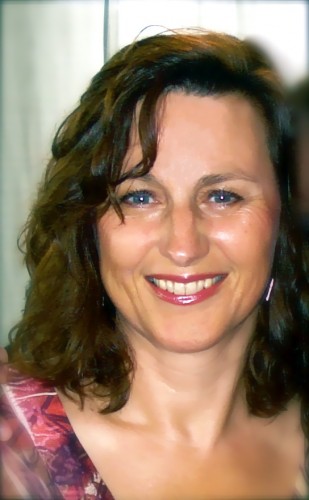This content was published: February 7, 2011. Phone numbers, email addresses, and other information may have changed.
Art history instructor teaches students from Florence, Italy
Photos and story by Meryl Lipman
Most would agree that Susanne Tringali is living the dream. Seven years ago the veteran PCC art history instructor gave up a full time faculty position and moved to Florence, Italy, where she now lives part time and teaches online classes for PCC.
An early innovator in distance learning, Tringali was recently recognized by The Instructional Technology Council, an affiliated council of the American Association of Community Colleges, which lauded her as a Distinguished Educator.
Though she teaches in a virtual medium and often holds coffee meetings via Skype with her colleagues at Rock Creek Campus, Tringali views her job, her classes and her students as very real. She stresses that her students “do not get lost in the online learning environment,” which she insures by responding to discussion board posts and by contacting students individually.
“I don’t use the automatic counting tool,” said Tringali. “It’s an effort, but it is very, very rewarding.”
Her colleagues and students affirm that she does her job with passion and skill, apparent in her peers’ nomination for the ITC award. But she did not always have their support. An instructor at PCC since 1995, Tringali was a pioneer of distance learning at a time when faculty members were skeptical.
“My colleagues worried that I could never transmit the passion online, that I was doing the students a disservice,” Tringali said.
But, according to Rock Creek Art Department Chair Mark Andres, “Susanne fought for this and proved everyone wrong by setting the record for the fastest filled course in the district.”
The secret to her success? Rigorous curriculum, rich discussion and high expectations of her students. According to PCC Director of Distance Education John Sneed, Tringali, “makes it very clear in the syllabus and course orientation the expectations for participation and objectives. She requires her students to engage with the artwork.”
Tringali often lectures from architectural sites across Europe. Students are then asked to find art in their communities. Tringali also finds unique ways to recreate art in its original environment. Debunking the myth of distance learning as a flat, two-dimensional process, she tasks students of Paleolithic art, for example, to sit under a desk and replicate a cave painting.
If skeptics think distance learning instructors are removed from their students, particularly when they live far away, Tringali has removed that distance. She has hosted several students in Italy, leading them on tours and showing them the artwork they studied.
“When I see students responding emotionally to these artworks, then I know what it’s all about,” she said.
As for living the dream, Tringali says it is not without cost. Everything she owns fits in a suitcase, except for a few precious art pieces on loan to family and friends. She said she often misses her grown children, who live stateside.
“It was a hard choice for me,” she said. “(When you live this way) you are never home.”
She is hardly complaining, however. Born in Germany, Tringali moved to the U.S. on her own when she was 18.
“I’ve always had wanderlust,” she said. “I go to Rome a lot, and when the train pulls in, I see those ancient Roman walls and think, ‘I am in Rome!'”
For now, she will keep traveling and teaching from the road. With distance learning, she said, “I can be anywhere. Just like my students.”

